Sitting at a desk all day can lead to stiffness, reduced flexibility, and even chronic pain. Incorporating regular stretching into the daily routine is essential for counteracting these effects. This post explores a series of stretches specifically tailored for those who spend their days in front of a computer. These stretches are easy to perform, require no special equipment, and offer significant benefits, including improved flexibility, reduced muscle tension, and enhanced circulation, making them ideal for busy professionals.
Contents
Cat-Cow Stretch
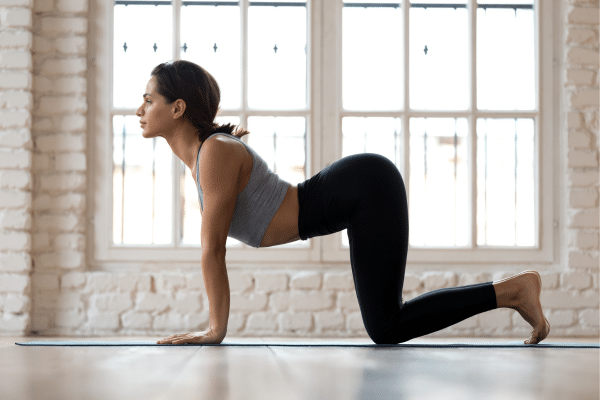
This stretch is a simple yet effective way to relieve back tension and improve spinal flexibility. Begin by positioning oneself on hands and knees, ensuring that the knees are directly below the hips and the wrists are aligned with the shoulders. Slowly arch the back towards the ceiling, drawing in the abdomen, to form the ‘cat’ position. Then, gently lower the abdomen towards the floor, lifting the head and tailbone upwards, transitioning into the ‘cow’ position. This fluid movement helps to stretch and mobilize the spine.
Repeating the Cat-Cow Stretch several times throughout the day can significantly benefit those seated for prolonged periods. It not only aids in reducing stiffness in the back but also promotes better posture. Regular practice of this stretch helps in maintaining spinal health and preventing the discomfort often associated with long hours of desk work. Additionally, it can be easily performed in a small space, making it an ideal stretch for office environments.
Seated Spinal Twist
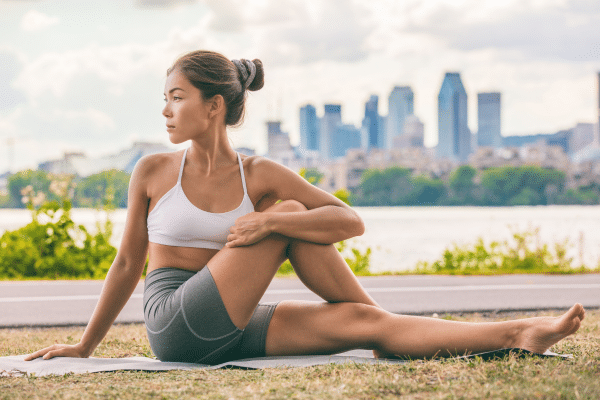
The Seated Spinal Twist is an excellent stretch for releasing tension in the back and improving overall spinal health. While seated, place one hand on the opposite knee and the other behind the back for support. Gently twist the torso towards the hand placed behind, keeping the spine tall and the hips facing forward. This rotation should come from the waist, stretching the back muscles and aiding in spinal flexibility. Hold the position for a few seconds before switching to the other side.
In addition to enhancing flexibility, the Seated Spinal Twist is particularly beneficial for correcting posture and relieving stress in the back muscles. It’s an effective way to break the monotony of sitting in the same position and can be done right at the desk. Regularly incorporating this stretch into the daily routine can lead to noticeable improvements in back health and comfort, making it a valuable addition for anyone spending long hours at a desk.
Hamstring Stretch
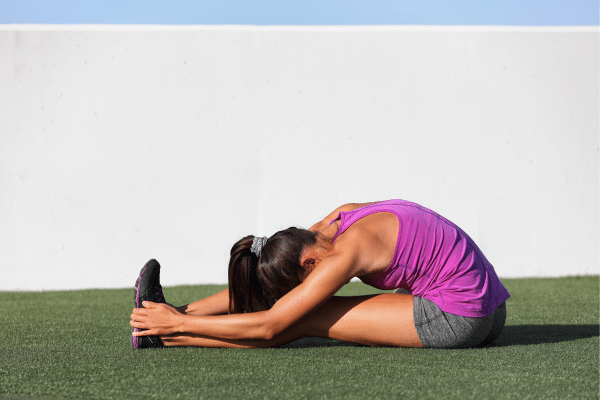
The hamstring stretch is crucial for those who sit all day, as it helps in preventing leg and lower back stiffness. To perform this stretch, extend one leg forward while sitting, keeping the heel on the ground and toes pointed up. Lean forward gently from the hips, reaching towards the toes until a stretch is felt in the back of the thigh. This stretch not only targets the hamstrings but also indirectly relieves tension in the lower back.
Incorporating the hamstring stretch into the daily routine improves leg circulation and flexibility. It’s particularly important for desk-bound individuals as it counteracts the effects of prolonged sitting, such as reduced blood flow and muscle tightness. Regular practice of this stretch can lead to enhanced mobility and reduced discomfort, contributing to overall physical well-being.
Wrist And Finger Stretches
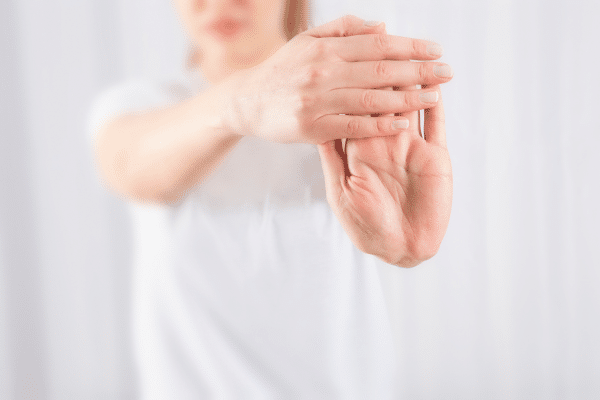
Wrist and finger stretches are essential for those who do extensive typing or computer work. Stretching the wrists and fingers helps prevent stiffness and reduces the risk of repetitive strain injuries, such as carpal tunnel syndrome. One simple stretch involves extending the arm forward with the palm facing up, then gently pulling the fingers back towards the body with the other hand. This stretch should be felt along the underside of the forearm and wrist.
Regular practice of wrist and finger stretches is crucial in maintaining flexibility and preventing strain. As repetitive motions like typing are common for desk workers, these stretches offer an effective way to counteract potential harm. By dedicating a few minutes each day to these stretches, one can ensure better wrist and hand health, which is essential for productivity and comfort in any desk-based occupation.
Chest Stretch
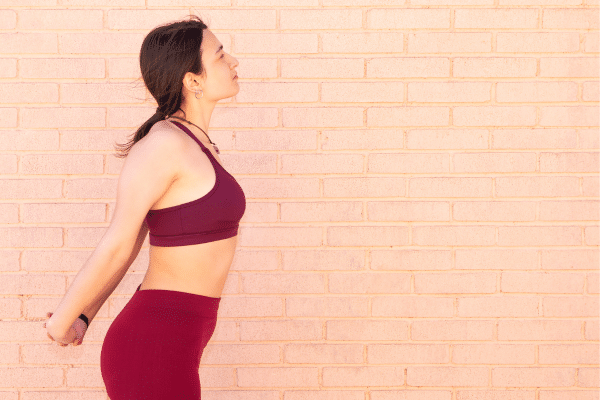
The chest stretch is beneficial for those who tend to hunch over a desk, as it opens up the chest and improves breathing. To perform this stretch, stand or sit upright and clasp the hands behind the back. Gently lift the arms, feeling the stretch across the chest. This stretch not only alleviates tightness in the chest muscles but also promotes better posture by counteracting the forward hunch often developed from desk work.
Practicing the chest stretch regularly can significantly improve upper body flexibility and reduce tension. This stretch is particularly important for maintaining a healthy posture and ensuring proper lung function, as a tight chest can restrict breathing. By incorporating this stretch into the daily routine, one can enjoy improved posture, reduced tension, and enhanced overall well-being.
Hip Flexor Stretch
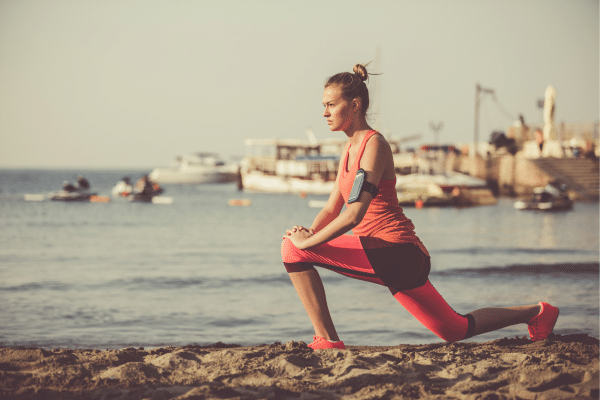
The hip flexor stretch is crucial for those who sit for prolonged periods, as it helps in reducing tightness in the hips. To perform this stretch, step one foot forward and bend the knee, keeping the other leg straight behind, and gently push the hips forward. This stretch targets the hip flexors, which can become tight and contribute to lower back pain when one sits for extended periods.
Regularly performing the hip flexor stretch can greatly enhance lower body mobility and reduce discomfort in the hips and lower back. It’s an effective way to counter the effects of sitting, such as hip stiffness and reduced range of motion. By incorporating this stretch into a daily routine, one can maintain better hip flexibility and overall physical health.
The Bottom Line
Stretching is a vital, yet often overlooked, aspect of maintaining health and wellness, especially for those who spend most of their day at a desk. The stretches outlined here target key areas affected by prolonged sitting, such as the back, neck, shoulders, legs, wrists, and hips. Incorporating these simple, yet effective stretches into a daily routine can greatly enhance flexibility, reduce muscle tension, and improve overall well-being. It’s a small investment of time that can yield significant long-term benefits for both physical and mental health.


